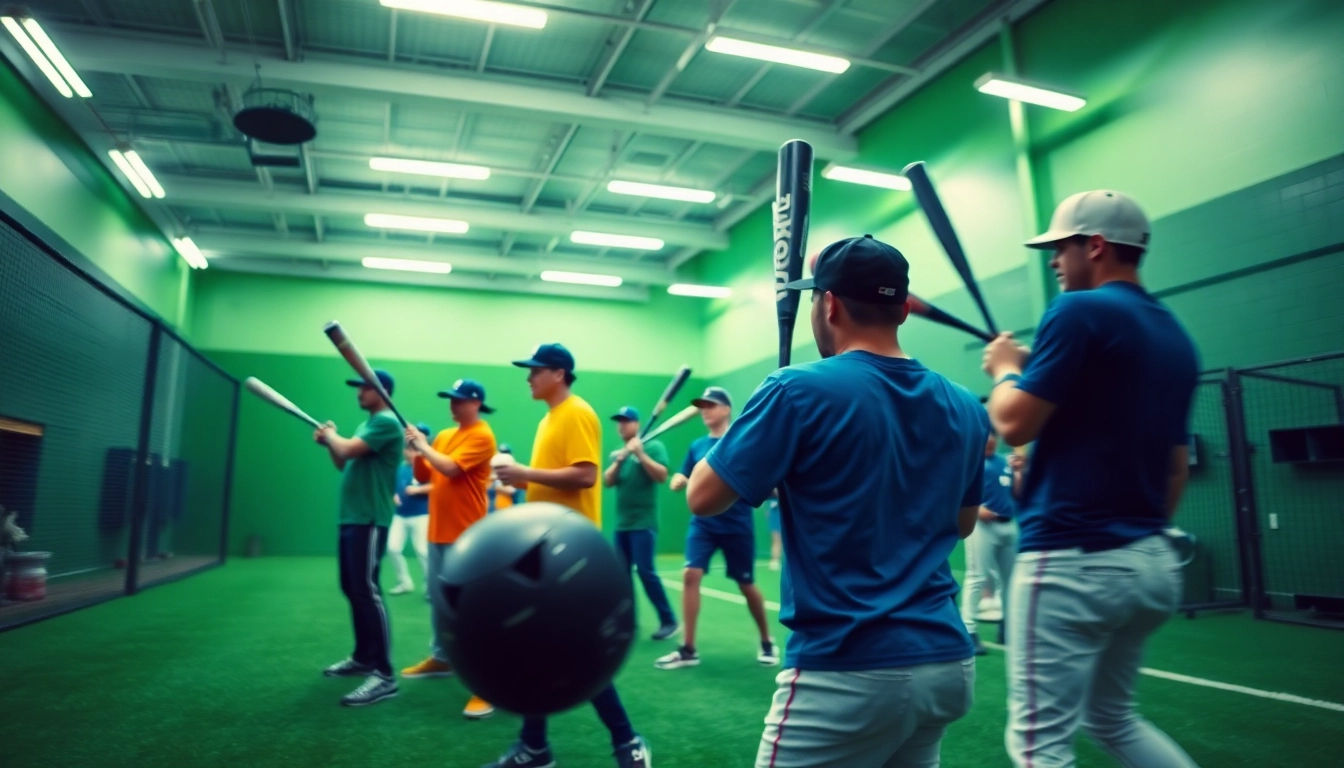Understanding the Hit Club Concept
What is a Hit Club?
Hit Clubs are specialized training programs designed for baseball players seeking to hone their skills and enhance their performance on the field. These clubs provide a structured environment where athletes can engage in drills, receive coaching, and participate in competitive play. The primary objective of a hit club is to facilitate skill development, focusing on hitting, fielding, and overall baseball fundamentals. One prominent feature of these clubs is the fanfare around player milestones such as surpassing 3000 career hits, which has secured its place in baseball lore and sparked interest in training circuits.
The Importance of Baseball Training
Training is crucial for any aspiring baseball player. It is through rigorous practice and guidance that athletes can refine their technique and build the physical condition necessary to excel. A structured training regimen offered by a hit club helps players improve their batting averages, fielding statistics, and overall game intelligence. Moreover, reacting to the dynamic nature of baseball requires not only physical prowess but also strategic thinking, which is emphasized in club training.
Key Benefits of Joining a Hit Club
- Expert Coaching: Access to seasoned coaches who provide tailored feedback and development plans.
- Skill Development: Focused training on specific skills from hitting mechanics to base running techniques.
- Structured Environment: A disciplined setting conducive to consistent practice and improvement.
- Competitive Play: Opportunities to participate in games and tournaments to test newly acquired skills.
- Networking: Building relationships with fellow players and coaches that can lead to future opportunities.
Finding the Right Hit Club for You
Factors to Consider When Choosing a Hit Club
Choosing the right hit club involves evaluating several factors to ensure it meets your training needs:
- Location: Proximity to your home can significantly impact your ability to attend sessions consistently.
- Reputation: Researching the club’s track record and testimonials from current and past members can give insights into the quality of training provided.
- Coaching Staff: The qualifications and experience of the coaches are paramount; inquire about their previous achievements in coaching and playing.
- Facilities: High-quality training facilities, including batting cages and weights, enhance the training experience.
- Cost: Consider your budget and the overall value of what the club offers concerning training and resources.
Top Hit Clubs to Explore Nationwide
Across the United States, several hit clubs stand out for their innovative training methods and proven success records:
- Hit Club Baseball (California): Known for its comprehensive training programs that prepare players for high school and collegiate level baseball.
- HitTrax Baseball Academy (Minnesota): Offers high-tech training simulations that help athletes refine their hitting mechanics.
- The Hitting Zone (New York): Focuses on individualized skill development and combines traditional coaching with modern analytics.
Community and Networking Opportunities in Hit Clubs
Joining a hit club provides players not only with training but also with a community of like-minded individuals. This environment fosters friendships and provides networking opportunities that can be beneficial for future playing options, whether in school teams or college scouts. Many clubs host community events, tournaments, and showcases, allowing players to display their skills to a broader audience, open doors for scholarships, and ignite potential career paths.
Training Techniques Used in Hit Clubs
Fundamental Skills Taught at Hit Clubs
Hit clubs emphasize various fundamental skills crucial for a baseball player’s success:
- Batting Techniques: Players are taught proper stance, grip, swing mechanics, and follow-through techniques.
- Fielding Skills: Involves drills for ground balls, fly balls, and double plays, ensuring a well-rounded defensive prowess.
- Base Running: Training includes not just speed but also awareness and decision-making on the bases, such as when to steal or when to hold up.
Advanced Training Methods for Serious Players
For those dedicated to excelling in baseball, hit clubs offer advanced training methodologies:
- Data-Driven Approaches: Utilizing technology to analyze swing data can lead to optimized performance.
- Strength and Conditioning: Customized fitness programs that enhance agility, strength, and stamina specifically required for baseball.
- Visualization Techniques: Many professionals argue for visualization as a mental strategy to enhance focus and confidence when stepping up to the plate.
Evaluation and Feedback Process in a Hit Club
Feedback and evaluation are integral to the player development process within hit clubs. Regular assessments from coaches guide players on where to focus their efforts for improvement. Many clubs implement technology, such as video analysis, to provide visual feedback on player performance, making it easier to understand areas that require rectification. Setting measurable goals that align with these evaluations will keep players motivated and focused on their development trajectory.
Success Stories from Hit Club Members
Notable Players Who Started in Hit Clubs
Several professional baseball players credit their success to the training they received in hit clubs. These clubs laid the foundation for their skills and game understanding, contributing to their ascent to professional levels. Names such as Derek Jeter and Ken Griffey Jr. often surface in discussions surrounding youth training programs, serving as motivation for aspiring players worldwide.
Personal Testimonials from Current Players
Players currently involved in hit clubs often share transformative experiences. Testimonials frequently mention enhanced performance in games, increased confidence during trials, and even scholarships to esteemed baseball programs due to the networks formed within the clubs. This community aspect tends to amplify the overall experience and commitment to the sport.
How Hit Clubs Have Transformed Careers
Beyond just skill enhancement, hit clubs have significantly impacted the career trajectories of many players. For instance, some players have utilized their accomplishments from hit clubs as stepping stones to scholarships, leading to collegiate success and, ultimately, careers in the Major Leagues. Clubs often facilitate exposure opportunities—tournaments, showcases, and interactions with scouts—that can be pivotal in a player’s professional journey.
Maximizing Your Hit Club Experience
Setting Personal Goals within a Hit Club
Setting clear, measurable goals when joining a hit club is crucial for personal growth and accountability. Goals can range from improving hitting percentages, mastering specific techniques, or even transitioning from junior leagues to high school or collegiate levels. Players are encouraged to communicate their individual objectives with coaches to develop focused training regimens tailored to meet these goals.
Making the Most of Training Sessions
To maximize the benefits of training sessions, players should approach each practice with a mindset geared toward improvement. Engaging fully, asking questions, and embracing critiques will foster growth. Additionally, coming prepared—physically and mentally—ensures that players can perform at their best. Utilizing any extra resources, such as one-on-one coaching or volitional practice beyond scheduled sessions, will also contribute to rapid development.
Leveraging Club Resources for Development
Hit clubs offer a plethora of resources ranging from coaching clinics, workshops, equipment access, and more. Players should take full advantage of these resources. Participating in workshops enhances knowledge about the game, while utilizing club facilities can allow for additional practice time that fits one’s schedule. Engaging with more experienced members can offer insights on best practices and prepare younger players for the mental and emotional challenges of competitive baseball.



